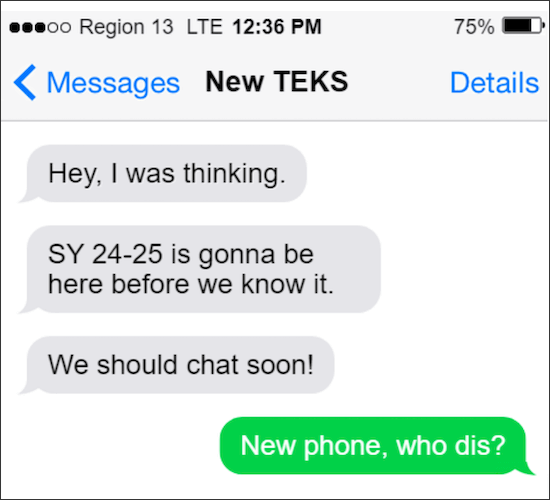When I taught fourth-grade science in July 2020, I discovered the classroom textbooks had copyright dates of 1992, almost two decades before my students were born! This realization led to the inevitable question: “Is this information still current, or has science changed?”
The short answer is today’s understanding of science changes constantly.
According to NPR, “the body of scientific knowledge is continually evolving.”
Lombrozo, Tania (2017). What Makes Science Science?
Therefore, to keep our students up-to-date with the latest advances in science, we must continue to create real-world learning experiences fostering students’ creativity and build critical thinking skills.
In Texas, the State Board of Education (SBOE) creates, revises, and publishes standards for each content area and grade level. The SBOE adopted new science standards to be implemented in the 2024-25 school year, or TEKS, for K-12 to maintain rigor and keep student expectations current with scientific thinking. The SBOE adopted new science standards for K-8 Science and the high school courses, including but not limited to:
- Biology
- Chemistry
- Integrated Physics and Chemistry
- Physics, Environmental Systems
- Anatomy and Physiology, and
- Forensic Science.
Implementing these future TEKS will happen in the 2024-25 school year. To clarify, this doesn’t mean the TEKS adoption process is easy. On the contrary, the process often causes anxiety among teachers, administrators, and other stakeholders who work directly with students. With new TEKS comes new expectations, language, and, of course, content!

What are the more significant changes to the TEKS?
The following summarizes changes to the TEKS for the 2024-25 school year that we believe to be most significant.
- Three Dimensional Curriculum
The biggest shift with the future science TEKS is from two dimensional (2D) to three dimensional (3D) curriculum. The current science TEKS function in a 2D sense through process skills (typically strands 1-4), and content TEKS (strands 5 and up). The process skills focused on scientific practice (the “how” of being a scientist), while the content TEKS focused on the content (the “what”). The future TEKS will replace the process skills with Science and Engineering Practices (SEPs) and Recurring Themes and Concepts (RTCs). The three dimensions of the future science TEKS include:- Science and Engineering Practices (SEPs): These are the practices that scientists use to ask and answer questions, and the practices that engineers use to define problems and design solutions. Examples include communicating information and designing solutions.
- Recurring Themes and Concepts (RTCs): These are big-picture concepts that span the entire field of science, not just one grade level. They are evident across grades K-12 and are relevant to all students, not just students who will major in science in college. In general, if a student who comes through the K-12 school system is able to navigate these concepts, they can truly grasp the core of what science is and how we can use it to impact the world.
- Content TEKS: This is the content itself (the what). Nothing has changed in this regard.
- Vertical Alignment
Vertical alignment was emphasized during the development process. In order to begin with the end in mind, the SBOE work group for high school developed their courses first in order to define what students ultimately need to take from the K-12 science curriculum. From there, the middle school and elementary courses were developed to build students up to that. Based on this format, you will find various spaces throughout K-12 where the content was either moved, added, or removed from the curriculum.
The TEKS Resource System State Development Team has been working on a comprehensive curriculum aligned to the future science TEKS.
“A Guaranteed and Viable Curriculum is the construct that articulates how each student will receive a comprehensive, equitable, rigorous, and standards-based education, across all grade-levels, in all subject areas.”
Marzano, R.J. (2003). What works in schools: Translating research into action.
In collaboration with talented educators from across the state of Texas, our team developed TEKS Clarification Documents (unpacking of SE’s) and Year at a Glance (YAG) documents. We are currently full steam on developing Instructional Focus Documents (IFD’s), which provide unit overviews, breakdowns, and performance assessments. We are excited to share our work with K-12 Science educators.
The 4th graders I taught in 2020 will be 7th graders when the new TEKS are implemented. Their class and future classes are primed to benefit from this shift in TEKS, in a position to use their content knowledge and skills to create sustainable solutions to relevant problems.
Stay informed on the Science TEKS
We have overviews of the TEKS planned for Elementary and Secondary grades and sessions for campus and district leaders! To stay informed on these and other opportunities, join our Science newsletter.







Keeping yourself informed.